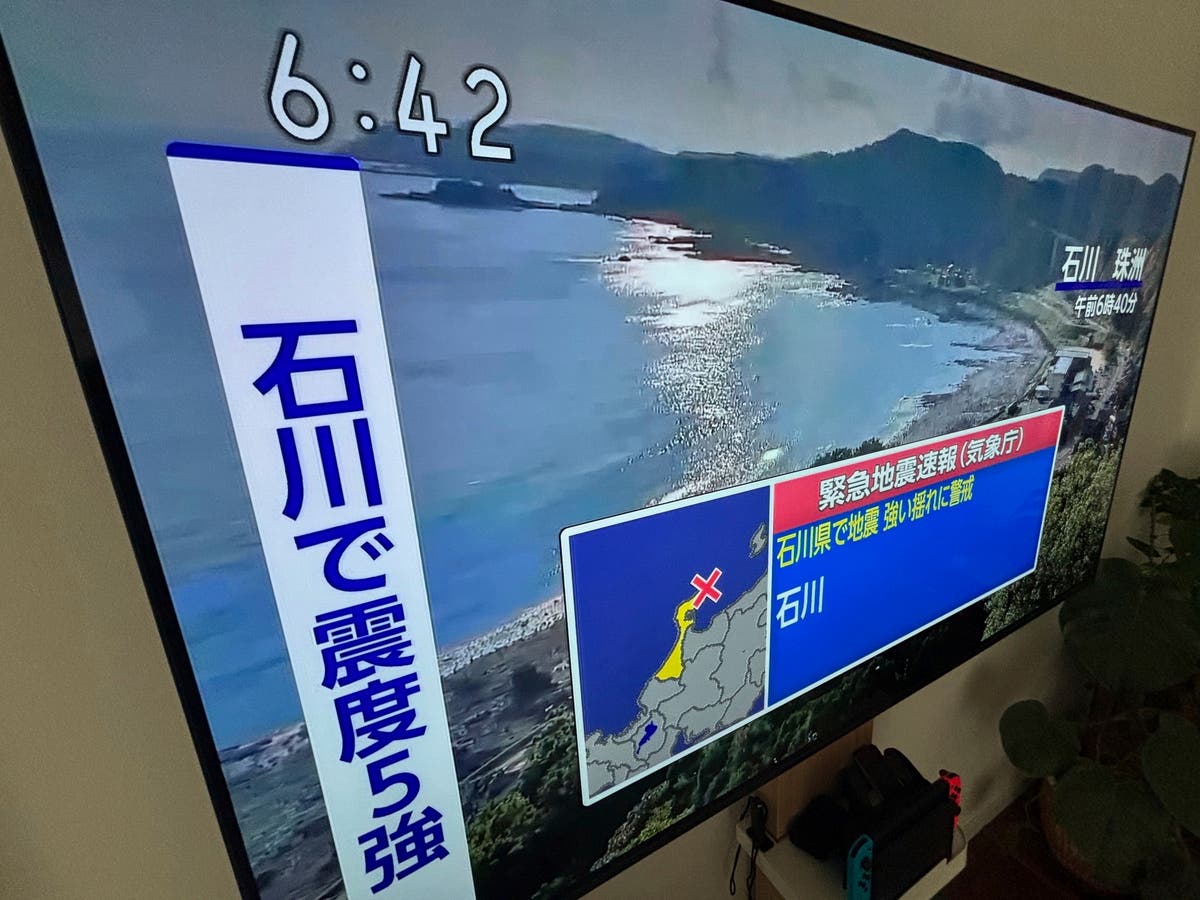A powerful earthquake measuring magnitude 7.1 struck southwestern Japan on Thursday, triggering tsunami warnings for a number of the country’s western islands and causing mostly minor injuries.
The tremor occurred off the coast of Miyazaki Prefecture at 4.42pm local time (7.42am GMT), at a depth of about 18miles (29km), according to Japan’s meteorological agency.
Officials said nine people were injured on the island of Kyushu, but the injuries were mostly minor. There were no reports of serious damage and tsunami advisories were later lifted.
Earlier Japan’s earthquake monitors said the magnitude was 6.9, before this was revised up to 7.1. Officials issued a tsunami advisory and residents in the coastal Kochi and Miyazaki prefectures are being asked to evacuate their homes as a precautionary measure until the warning is lifted.
However, the quake prompted seismologists to hold an emergency meeting in which they reassessed and raised the level of risk of major quakes associated with the Nankai Trough east of southern Japan.
The Japan Meteorological Agency issued on Thursday its first-ever warning of the risk of a huge earthquake on the country’s Pacific coast, following the quake that struck Kyushu.
Japan’s prime minister Fumio Kishida cancelled his plans to visit central Asia for summits with regional leaders after weather officials flagged that the risk of a major Pacific coast earthquake was higher than usual, public broadcaster NHK said.
Although the warning does not indicate such a quake will definitely happen, Japan is set to cancel Mr Kishida’s trip in order to prepare for any eventuality, but hopes to hold some of the meetings online instead, NHK added.
The visit to Kazakhstan, Uzbekistan and Mongolia was originally scheduled to run from Friday to Monday. Mr Kishida was to have travelled to Kazakhstan on Friday, followed by a visit to Uzbekistan before heading to Mongolia for a summit on Monday.
The meteorological agency’s advisory warns of a higher probability of a huge earthquake in the Nankai trough, an ocean-floor trench running along Japan’s Pacific coast, where previous quakes have triggered enormous tsunamis.
Japan estimates at 70 per cent to 80 per cent the probability of an earthquake of magnitude 8 or 9 happening around the trough in the next 30 years, according to the infrastructure ministry.
Advisories rather than warnings are issued when the waves are not expected to exceed 1m (3.3ft), meaning they are relatively minor but still pose a risk.
Some unverified videos on social media show cars and small structures shaking with several shops sustaining damage.

NHK said Miyazaki Port reported a surge of 20 inches, the largest so far.
The Miyazaki police chief told the broadcaster that they were checking if there had been any structural damage to buildings, but that so far no damage had been reported.
The Japanese government has set up a special task force in response to the quakes, AFP reported, citing a a statement. There were no immediate signs of major damage, according to the agency.
Japan, one of the world’s most tectonically active countries, has strict building standards designed to ensure structures can withstand even the most powerful earthquakes.
The country records more earthquakes, around 1,500 every year, than any other.
In 2011 Japan recorded its biggest earthquake on record with a massive magnitude of 9.0. The quake’s epicentre was just off its northeast coast and it triggered a large tsunami that left around 18,500 people dead or missing.
The catastrophe also sent three reactors into meltdown at the Fukushima nuclear plant, causing Japan’s worst post-war disaster and the most serious nuclear accident since Chernobyl.
Additional reporting by agencies

